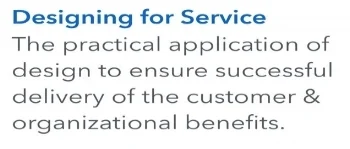Check out "Confluence," a short film from the Congaree Riverkeeper about Columbia's three rivers.
Service Design Basics - Part 2
Erik Flowers does an excellent job on his Practical Service Design blog post Demystifying Service Design Part 1 and Part 2 of clearly explaining the core principals of Service Design. Part 2 continues dissecting the key elements of the Service Design concept by providing a real-life, easily understood example of the application of the process.
He uses this example:
A trip to the amusement park to ride the new SuperCoaster 5000 rollercoaster.
To stress the importance of recognizing the inner workings of the process he breaks down each step of a customers experience on the way to achieving his/her goal of riding the SuperCoaster 5000:
- Trip to amusement park to ride new rollercoaster.
- Packed parking lot.
- From one maze to another, you get in line at the front gates.
- Gate attendant to scan ticket.
- SuperCoaster 5000 awaits, past the other rides, the various park staff, kiosks, garbage cans, gift shops, churro stands, and the rest of the guests making their way towards that ultimate goal.
- Finally, your turn arrives! You move into your stall like a rodeo bronco getting ready to be released. You get in and the restraints clamp down, and it's time.
- Zipping through the air, the coaster races down the tracks.
- After a few more rides, and what seems like miles of walking, you make a stop and partake of the park's fine cuisine. It's all worth it.
- "The memory of the experience. The entire park served the purpose of providing them not a $10 photograph in a cheap cardboard frame, but providing them with a memory that they can keep forever."
"As you read the story, were you taking note of all the touchpoints? The channels? The actors? What may be going on backstage and behind the scenes? If the story was successful, you probably weren’t." Erik Flowers
"The SuperCoaster 5000 doesn’t exist in a vacuum, though. It’s a part of the whole park, and all the other different types of touchpoints and channels that exist in the park ecosystem."
"What is important to recognize is that the customers are the ones who piece together their experience through the ecosystem. We set up as much as we can, but in the end, if we truly hope to offer more than just a one dimensional product, we have to account for the freedom of customers to do and feel what they want."
Erik Flowers
He sums it up by giving us some key points to remember:
“We can’t design an experience, we design for an experience.”
Customers design their experience each and every time. We only set the stage in service of the customer’s journey.
How you serve is who you are.
The way in which you serve is what defines you. This is the fundamental guiding principle of service design.
By defining and refining how we serve our external customers and internal actors, we can create more powerful and effective ways to serve both.
Service Design Basics - Part 1
Erik Flowers does an excellent job on his Practical Service Design blog post Demystifying Service Design Part 1 and Part 2 of clearly explaining the core principals of Service Design
"The customer benefit is what all parties should be trying to enhance. From a service designer’s point of view, this could mean:"
Erik Flowers
"This next benefit is where UX and design often is lacking: organization benefit. Most of the time, UX doesn’t really work on this."
Erik Flowers
"This being the case, service design makes another promise. It’s not only here to design your services. It is here to help you design for service; the way in which you are going to serve. This focuses on how the organization is going to ensure the successful delivery of service to the customer."
Erik Flowers
He stresses the fact that service is not simply a straight line between product and customer but a spectrum of options in between.
Classic service model
"Maybe you specialize and offer different types of hammers to serve more specific tasks. Maybe you rent hammers. Maybe you have your hammers up in the cloud (HAAS: hammering as a service). Or, maybe you have professional hammering advisors who will tell you exactly how to hammer, but not do it for you."
Erik Flowers
Another core principle is what he refers to as "Stage Theory."
"The backstage is of the utmost importance for a very simple reason: it’s not visible, but it is felt. Felt in huge ways. The front stage is a product of, and constrained by, the health and effectiveness of the backstage." Erik Flowers
The final core principle he refers to is called "Behind the Scenes."
"This is crucial to understand in service design stage theory. What we can and can’t do is dictated by our behind the scenes. And yet, rarely does anyone apply any design thinking to it." Erik Flowers
“How you serve is who you are.”
Part 2 is summarized on the blog post Demystifying Service Design (cont.)











